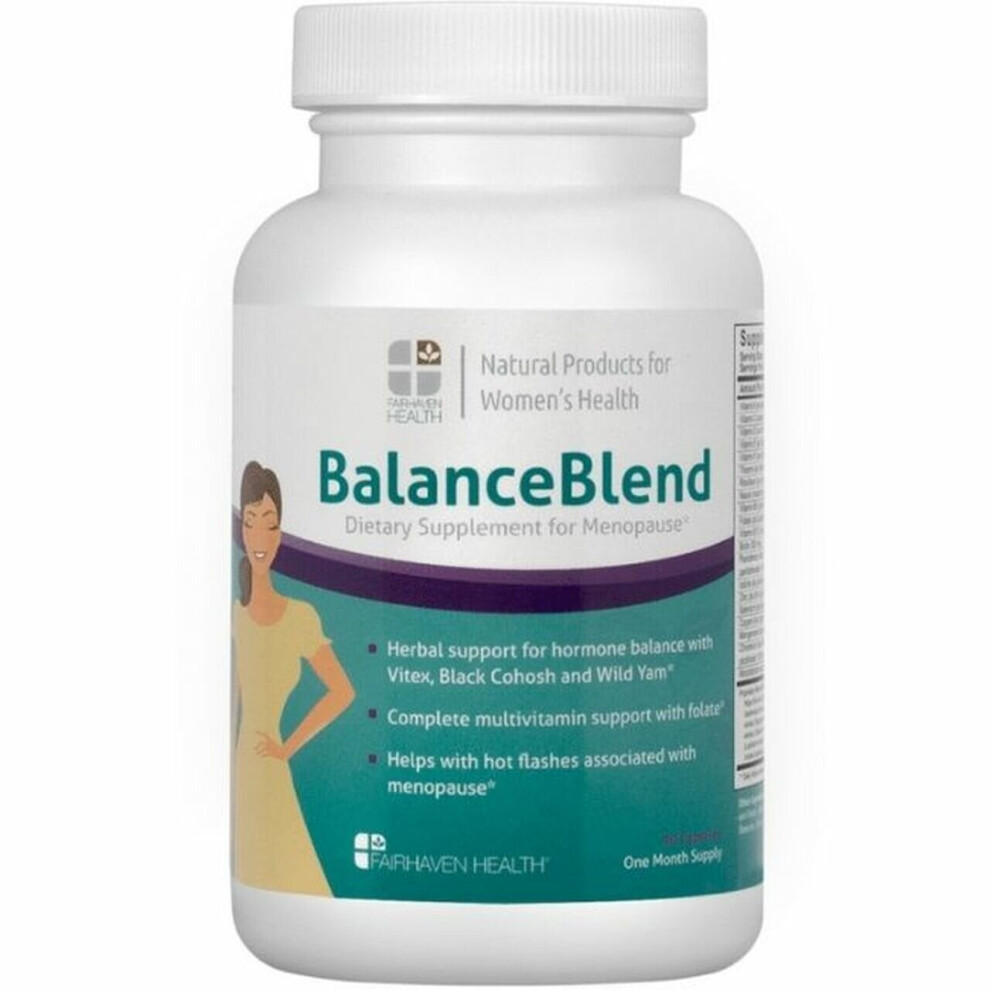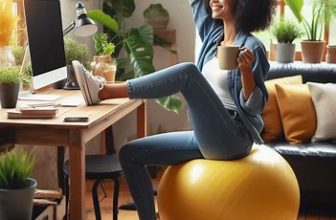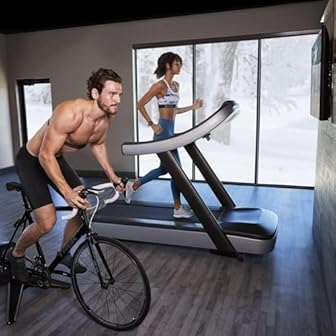Health and Fitness in the UK: Trends, Tips and Statistics
Health and fitness are important aspects of our lives, especially in the wake of the coronavirus pandemic that has disrupted our routines and challenged our well-being. In this blog post, we will explore some of the latest trends, tips and statistics on health and fitness in the UK, based on various sources of data and research.
Trends
The fitness industry in the UK is showing signs of recovery after the devastating impact of the lockdowns and restrictions that forced many gyms and fitness centres to close or operate at limited capacity. According to Statista, the revenue of the fitness industry in the UK stood at an estimated 3.56 billion euros in 2021, and the total number of gyms and fitness centres exceeded pre-pandemic figures in 2022.
One of the winners of this industry boom is The Gym Group, a chain of 24/7 fitness clubs founded in 2007. The number of The Gym Group health clubs has risen rapidly from 32 locations in 2012 to over 200 locations in 2022. The Gym Group offers affordable and flexible memberships, as well as a variety of equipment, classes and personal trainers to suit different needs and preferences.
Another trend that has emerged during the pandemic is the rise of online and digital fitness solutions, such as apps, wearables and eFitness platforms. These technologies enable people to access fitness content, guidance and coaching anytime and anywhere, as well as track their progress and performance. According to a report by PureGym, 44% of UK adults used an online fitness platform or app in 2021, up from 25% in 2020. Some of the most popular apps include Strava, Nike Training Club, Peloton and Fitbit.
Tips
The UK government has issued physical activity guidelines for different age groups, based on the recommendations of the Chief Medical Officers of the four UK countries. These guidelines aim to help people improve their health and reduce the risk of various diseases by being more active.
The guidelines for adults aged 19 to 64 are:
- Be active for at least 150 minutes of moderate-intensity activity 75 minutes of vigorous-intensity activity per week, or a combination of both. Moderate-intensity activities include brisk walking, cycling or dancing, while vigorous-intensity activities include running, swimming or playing sports.
- Do muscle-strengthening activities at least two days a week to increase bone strength and muscular fitness. Muscle-strengthening activities include lifting weights, doing push-ups or using resistance bands.
- Reduce sedentary time by breaking up long periods of sitting with light activity, such as standing up, stretching or walking.
The guidelines for older adults aged 65 and over are:
- Be active for at least 150 minutes of moderate-intensity activity 75 minutes of vigorous-intensity activity per week, or a combination of both.
- Do muscle-strengthening activities at least two days a week to maintain or improve physical function.
- Do activities that improve balance and coordination at least two days a week to reduce the risk of falls and injuries. Balance and coordination activities include tai chi, yoga or dancing.
- If you have a health condition or disability that limits your mobility, do as much activity as you can according to your abilities and seek advice from your doctor or a qualified professional.
Statistics
The Health Survey for England is an annual survey that collects data on various aspects of health and lifestyle among adults and children in England. The latest survey was conducted in 2021 and included questions on physical activity.
Some other popular fitness trends in the UK are:
High-intensity interval training (HIIT)
High-intensity interval training (HIIT) is a form of cardiovascular exercise that involves alternating between short bursts of high-intensity work and periods of rest or low-intensity activity. HIIT has become very popular in the UK, as it offers many benefits for health, fitness and performance. HIIT can improve metabolic rate, cardiovascular fitness, blood pressure, blood sugar levels, fat metabolism and weight loss.
HIIT can also enhance endurance performance by increasing maximal aerobic capacity (VO2 max), lactate threshold and exercise efficiency. HIIT can be adapted to different levels of fitness and goals and can be performed with or without equipment. There are different types of HIIT workouts, such as submaximal, VO2 max and sprint intervals, that target different energy systems and physiological adaptations.
HIIT workouts are time-efficient and effective, but they also require a high level of effort and motivation. HIIT should be performed with proper warm-up, recovery and progression to avoid overtraining and injury.
Functional training
Functional training is a form of exercise that aims to improve the performance of every day activities by strengthening the muscles, joints and tendons involved in various movements. Functional training exercises typically use body weight or free weights, rather than machines, as they require the use of multiple joints and moving in multiple directions. Functional training can help build mobility, power, speed, coordination and balance, as well as reduce the risk of injury.
In the UK, there are many options for functional training, whether you want to join a gym, a class or hire a personal trainer. Some examples of functional training gyms and classes are:
- The Functional Training Centre in Chorley offers outdoor fitness sessions that combine strength, agility and endurance exercises.
- SOFit Personal Training in Stourbridge provides personalised functional training programmes that suit your goals and abilities.
- Functional Fitness in Bicester sells functional fitness equipment and CrossFit equipment, as well as offering advice and support.
- Functional Fitness in Portishead has a boutique studio that offers personal training and small fitness classes that focus on functional movements.
If you are interested in learning more about functional training, you can also check out some online resources, such as:
- Women’s Health magazine, which has a guide on the best functional training exercises, gyms and classes.
- BFunctional is a website that provides classes, personal training, nutrition clinic and education on functional fitness.
- Training Qualifications UK is an awarding organisation that offers functional skills qualifications and resources.
Functional training is a great way to improve your fitness and health by making your body more adaptable and resilient to everyday challenges. Whether you want to lose weight, gain muscle, prevent injuries or enhance your performance, functional training can help you achieve your goals.
Group exercise classes
Group exercise classes are a great way to stay fit, have fun and meet new people. There are many types of group exercise classes available in the UK, from yoga and pilates to Zumba and spinning. Whether you want to improve your flexibility, strength, endurance or coordination, there is a class for you. Here are some of the most popular group exercise classes and concepts in the UK:
- Yoga: Yoga is a form of physical and mental exercise that combines breathing, meditation and postures. Yoga can help you reduce stress, and increase mobility, balance and relaxation. There are many styles of yoga, such as hatha, vinyasa, Bikram and ashtanga, each with different levels of intensity and focus. You can find yoga classes in gyms, studios, community centres and online.
- Zumba: Zumba is a dance-based fitness class that mixes Latin and international music with choreographed moves. Zumba can help you burn calories, and improve your cardiovascular health, coordination and mood. Zumba is suitable for all ages and fitness levels, as you can adjust the intensity and pace to your ability. You can find Zumba classes in gyms, leisure centres and online.
- CrossFit: CrossFit is a high-intensity fitness program that involves functional movements, such as lifting, pushing, pulling, jumping and running. CrossFit can help you build strength, power, endurance and agility. CrossFit is challenging and competitive, as you perform workouts of the day (WODs) that vary in duration, difficulty and exercises. You can find CrossFit classes in specialised gyms called boxes or online.
- Spinning/Indoor cycling/RPM: Spinning, indoor cycling or RPM are terms used to describe a group exercise class that involves riding a stationary bike to music. Spinning can help you burn calories, and improve your cardiovascular health, leg strength and endurance. Spinning is adaptable to your fitness level, as you can control the resistance and speed of your bike. You can find spinning classes in gyms, studios and online.
- Pilates: Pilates is a form of low-impact exercise that focuses on core strength, posture, alignment and flexibility. Pilates can help you improve your muscle tone, balance, joint mobility and injury prevention. Pilates can be done on a mat or using specialised equipment, such as reformers, Cadillacs and chairs. You can find pilates classes in gyms, studios and online.
If you are interested in joining a group exercise class in the UK, you can use the NHS website to find fitness activities and classes near you. You can also check out Sport England’s Join the Movement campaign for tips, advice and guidance on how to get active safely during the coronavirus (COVID-19) pandemic.
Mind-body exercises
Mind-body exercises are activities that involve both physical and mental aspects, such as breathing, awareness, movement and relaxation. They can help improve your health and well-being in various ways, such as reducing stress, enhancing mood, boosting confidence and increasing energy. Some examples of mind-body exercises that are popular in the UK are:
- Relaxation techniques. These are methods of calming your body and mind, such as deep breathing, progressive muscle relaxation, guided imagery or mindfulness. They can help you cope with anxiety, pain, insomnia and other problems. You can practise them on your own or with the help of audio recordings or apps.
- Meditation. This is a practice of focusing your attention on a single object, such as your breath, a word or a sound, or on your thoughts and feelings as they arise. It can help you become more aware of the present moment, reduce stress, enhance concentration and promote emotional balance. You can meditate in a quiet place, sitting or lying down, or while walking or doing other activities.
- Hypnotherapy. This is a form of therapy that uses hypnosis to create a state of deep relaxation and focused attention. It can help you change unwanted habits, behaviours or emotions, such as smoking, phobias or low self-esteem. You can do hypnotherapy with a trained therapist or by yourself using self-hypnosis techniques.
- Art therapy. This is a form of therapy that uses creative expression, such as drawing, painting, collage or sculpture, to explore and communicate your feelings and experiences. It can help you cope with stress, trauma, grief or illness, as well as enhance your self-awareness and creativity. You can do art therapy with a professional art therapist or by yourself using art materials at home.
- Music therapy. This is a form of therapy that uses music, such as listening, singing, playing or composing, to improve your physical, mental and emotional health. It can help you relax, express yourself, cope with pain, improve memory and communication skills, and stimulate your brain. You can do music therapy with a qualified music therapist or by yourself using music devices or instruments.
- Movement therapies. These are forms of exercise that combine physical movement with mental focus and awareness, such as yoga, tai chi or pilates. They can help you improve your posture, flexibility, strength and balance, as well as calm your mind, reduce tension and enhance your mood. You can do movement therapies in a class with an instructor or by yourself using videos or books.
Mind-body exercises are suitable for people of all ages and abilities. You can choose the ones that suit your preferences and goals, and practise them regularly to enjoy their benefits. However, if you have any medical conditions or injuries, you should consult your doctor before starting any new exercise programme.
According to the survey results:
- A higher proportion of men (70%) than women (59%) aged 16 and over met the 2011 aerobic guidelines of at least 150 minutes of moderate activity or 75 minutes of vigorous activity per week or an equivalent combination of both, in sessions of 10 minutes or more.
- The proportion of adults meeting the 2011 aerobic guidelines varied by region, being lowest in the North West (58%) and highest in the East Midlands (71%).
- The proportion of adults meeting the 2011 aerobic guidelines was lowest (53%) in the most deprived area quintile highest in the least deprived area quintile (68% ) and in the second least deprived quintile (70%).
- Adults are recommended to undertake muscle-strengthening activities at least two days a week to increase bone strength and muscular fitness. A higher proportion of men (36%) than women (29%) aged 16 and over met this guideline.
- Older adults are recommended to undertake balance exercises at least two days a week to maintain or improve their physical function. A higher proportion of men (17%) than women (14%) aged 65 and over met both the muscle-strengthening and balance exercise guidelines.
Conclusion
Health and fitness are essential for our physical and mental well-being, especially in these challenging times. The UK fitness industry is recovering from the pandemic and offering more options and opportunities for people to be active and healthy. The UK government has provided clear and evidence-based guidelines for physical activity for different age groups, which can help people improve their health and reduce the risk of various diseases. The Health Survey for England provides valuable data on the physical activity levels and patterns of adults and children in England, which can inform policy and practice.
We hope you enjoyed this blog post and learned something new about health and fitness in the UK. If you have any questions or comments, please feel free to share them below. Thank you for reading!
Tags: health and fitness
















